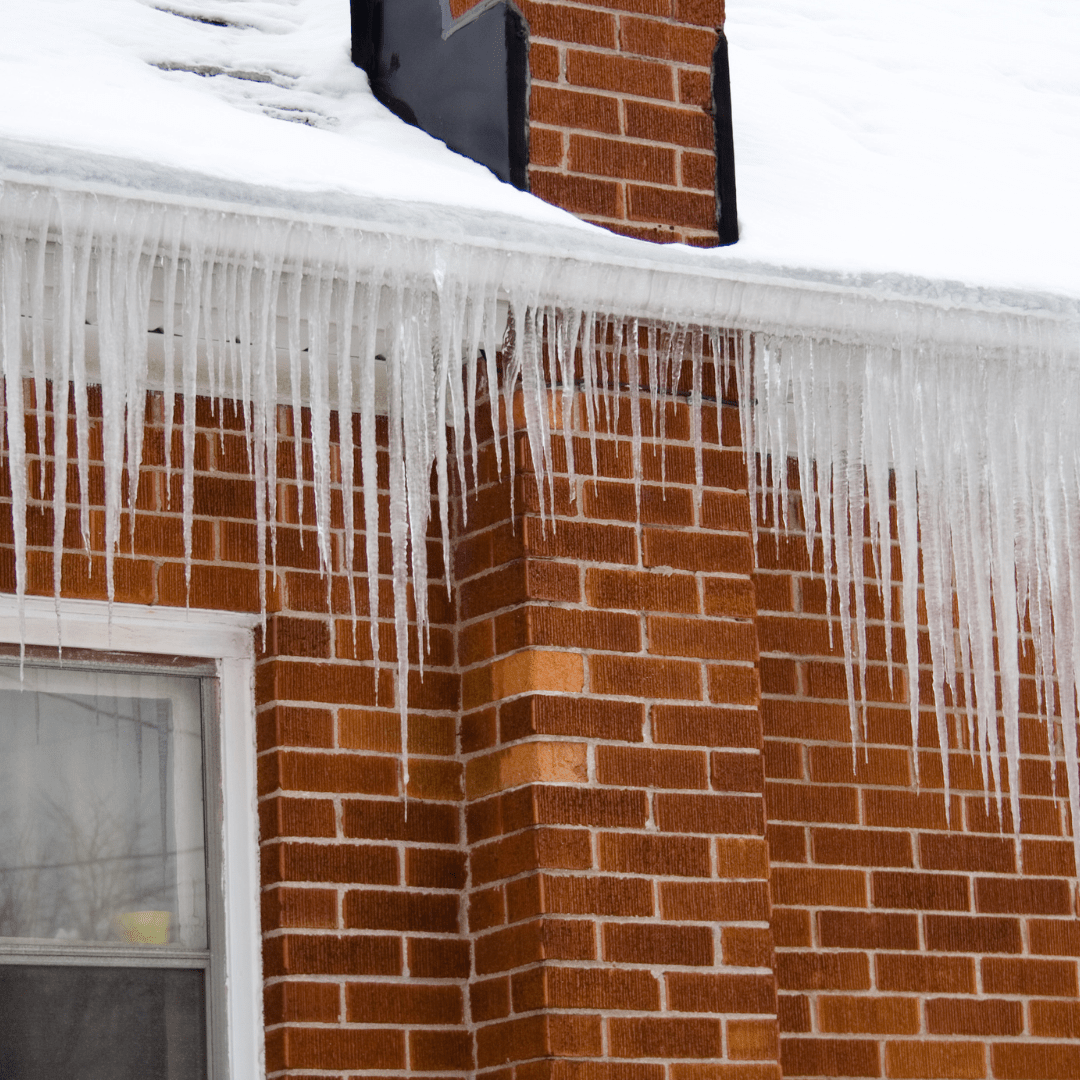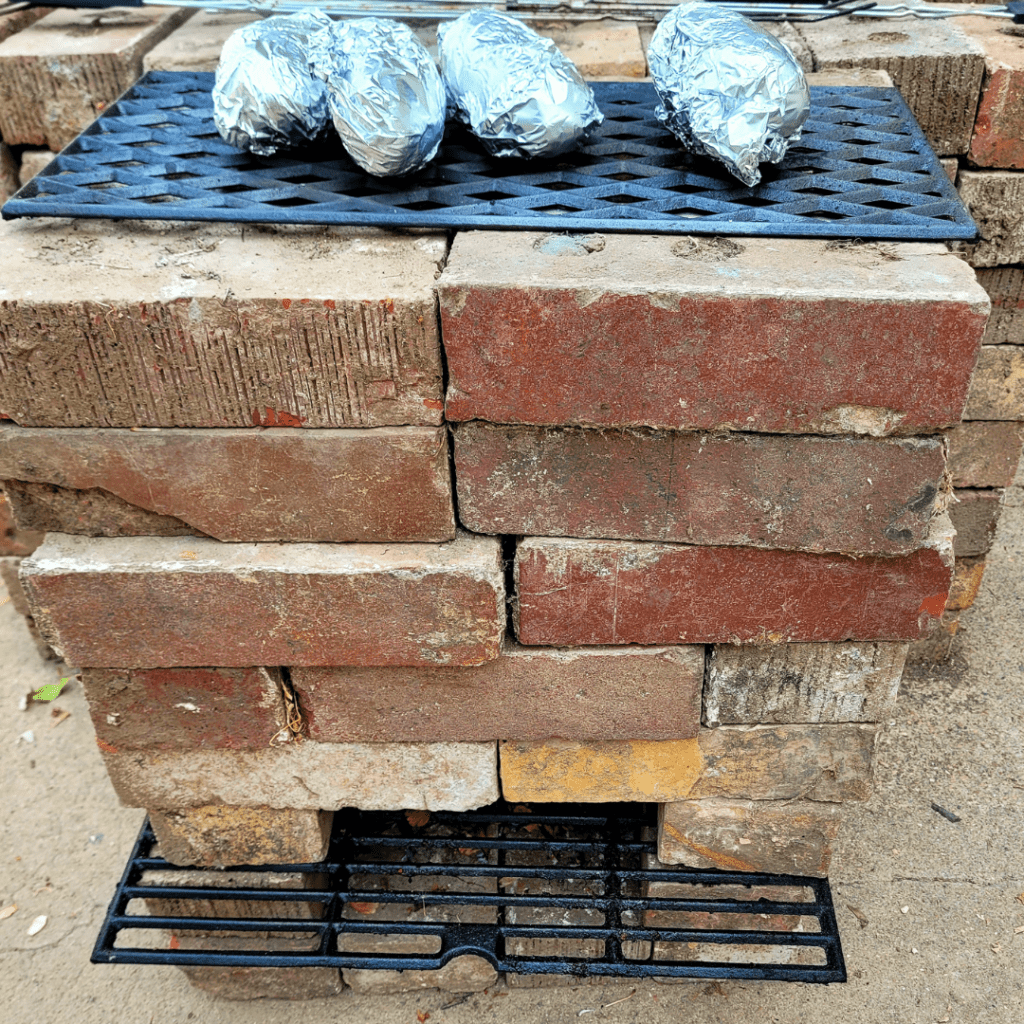Learn how to winterize your home effectively to stay warm, save energy, and protect your house from winter damage. From sealing drafts to prepping your heating system, these practical tips will keep Jack Frost at bay all season long.
Winter can bring harsh weather conditions that put a strain on our homes, but with proper preparation, we can protect our properties and ensure a warm and cozy living space. Winterizing your home is a crucial step in safeguarding against Jack Frost’s wrath. By taking proactive measures, you can not only enhance the comfort level inside your home, but also save on energy costs. This article will guide you through the essential steps of winterizing your home, from assessing vulnerabilities to implementing weatherproofing techniques, maintaining heating systems, protecting plumbing, and incorporating energy-efficient practices. Additionally, I will explore safety precautions to mitigate fire risks and ensure carbon monoxide detection. Let’s get started and get your home ready to withstand the challenges of the cold season!
This is a pinnable post. Tap or hover over any image in this post to pin to your Pinterest Boards.
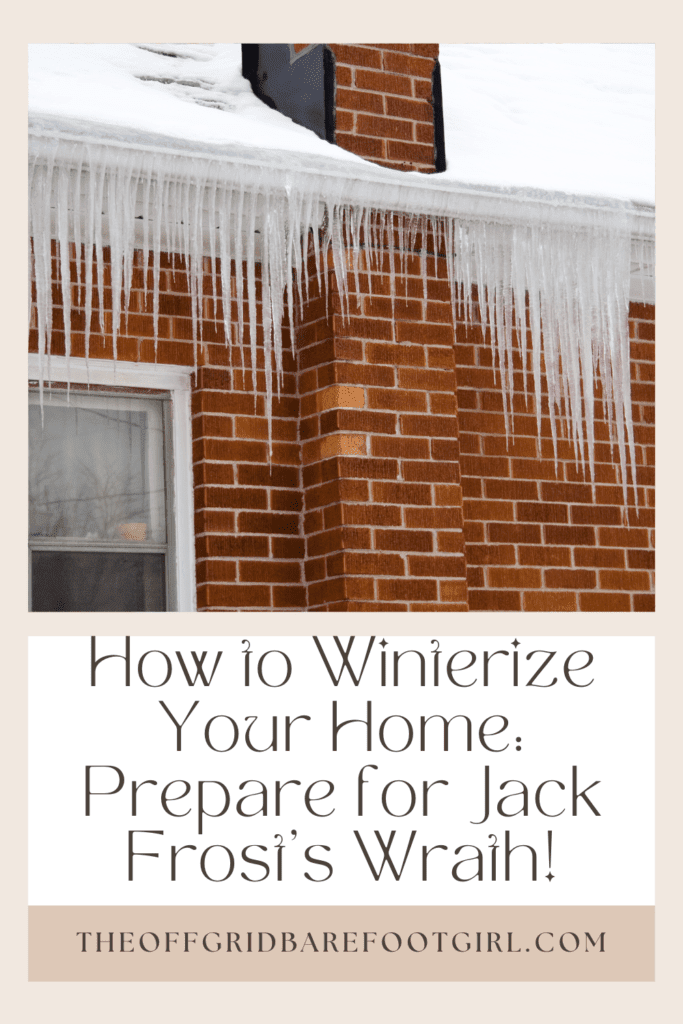
Understanding the Importance of Winterizing Your Home
Brrr! Jack Frost is on his way, and he’s not messing around. Winter can be a beautiful season, but it can also be a cold, harsh reality check for your home. That’s why it’s essential to winterize your humble abode and keep it cozy when the snow starts falling. By taking a few simple steps, you can ensure that you and your home are ready to tackle whatever winter throws your way.
Assessing Vulnerabilities: Identifying Areas in Need of Winterization
Inspecting Doors and Windows
When it comes to keeping the cold air out and warm air in, your doors and windows are the first line of defense. Take a close look at their seals, frames, and glass for any signs of wear and tear. If you spot any cracks or gaps, it’s time to address them before the chilly winds find their way inside.
Checking for Air Leaks and Drafts
No one likes a drafty house, especially during a winter storm. Check for air leaks around electrical outlets, pipes, and any other openings in your home’s walls. These sneaky gaps can let in cold air and make your heating bill skyrocket. Seal them up with weatherstripping or caulk to keep that icy breeze at bay.
Evaluating Roof and Attic

Your roof and attic play a crucial role in keeping your home warm and dry. Check for loose or damaged shingles, as well as any gaps or cracks that could let in moisture or cold air. Don’t forget to inspect your attic insulation and ensure it’s doing its job of keeping your home cozy and energy-efficient.
As you can clearly see in the photo, my house is missing a small piece of siding that blew off in a strong recent windstorm. I was able to salvage the siding piece that blew off and put it in my garage until I was able to get up the ladder and replace it before winter.
Examining Foundation and Walls
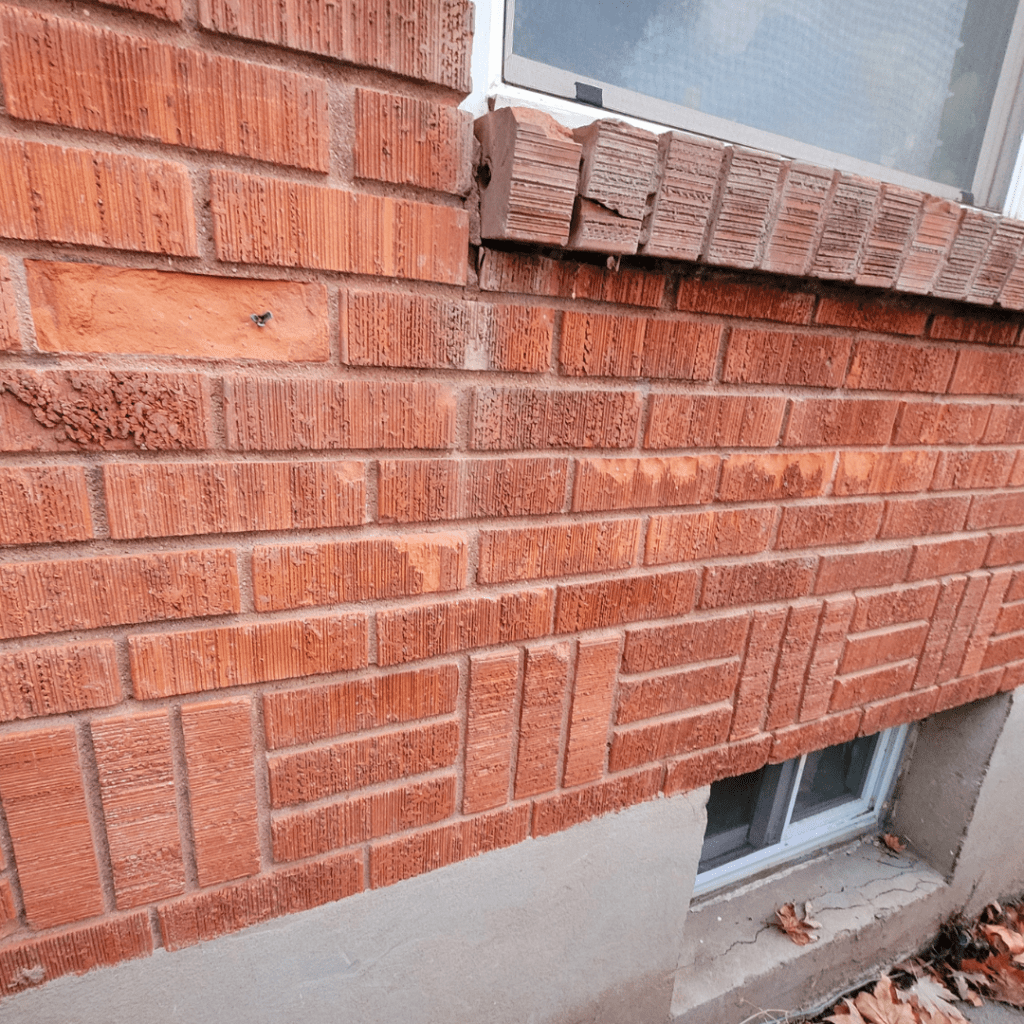
A solid foundation is essential for a warm and secure home. Inspect your foundation for any cracks or gaps that could allow cold air or pests to enter. Similarly, check your walls for signs of damage or gaps around pipes and wiring. It’s better to address these issues now than to deal with water leaks or unwanted critters later.
My brick home has a good solid foundation all the way around. When we first moved in, we took a caulking gun to any holes and cracks around the bricks and windows to ensure no gaps were left. I still need to do some fall cleanup before the snow arrives!
Weatherproofing Essentials: Sealing Drafts and Insulating
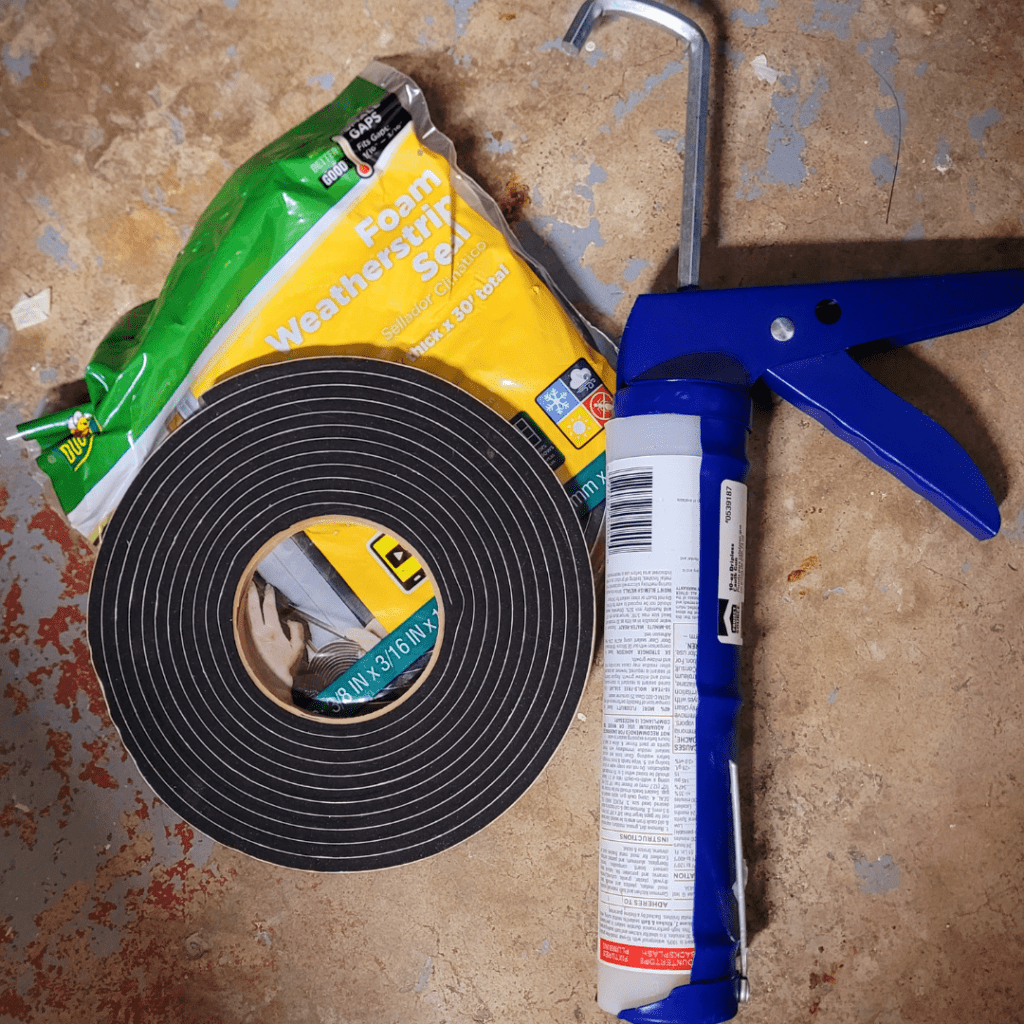
Caulking and Weatherstripping
My two favorite weatherizing tools are right here in this photo! They are cheap and easy fixes to winterizing your home on your own to get a fix on all those gappy holes and cracks that you can find in your home. I especially found the caulking useful when plugging up gaps in the basement ceiling around the edges to the outside. I also did that to keep out spiders who wanted to move inside with me! That is a BIG NOPE for me!
Caulking and weatherstripping are your secret weapons against cold air infiltration. Use caulk to seal gaps and cracks around windows, doors, and other areas prone to drafts. Weatherstripping, on the other hand, is perfect for sealing gaps around movable components like doors and windows. Put on your DIY cape and get to work!
Installing Door Sweeps

If you feel a chilly breeze sneaking in at the bottom of your doors, it’s time for some door sweeps. These handy little strips attach to the bottom of your doors and provide an extra seal against drafts. It’s a small investment that can make a big difference in keeping your home cozy and warm.
Insulating Attic and Walls
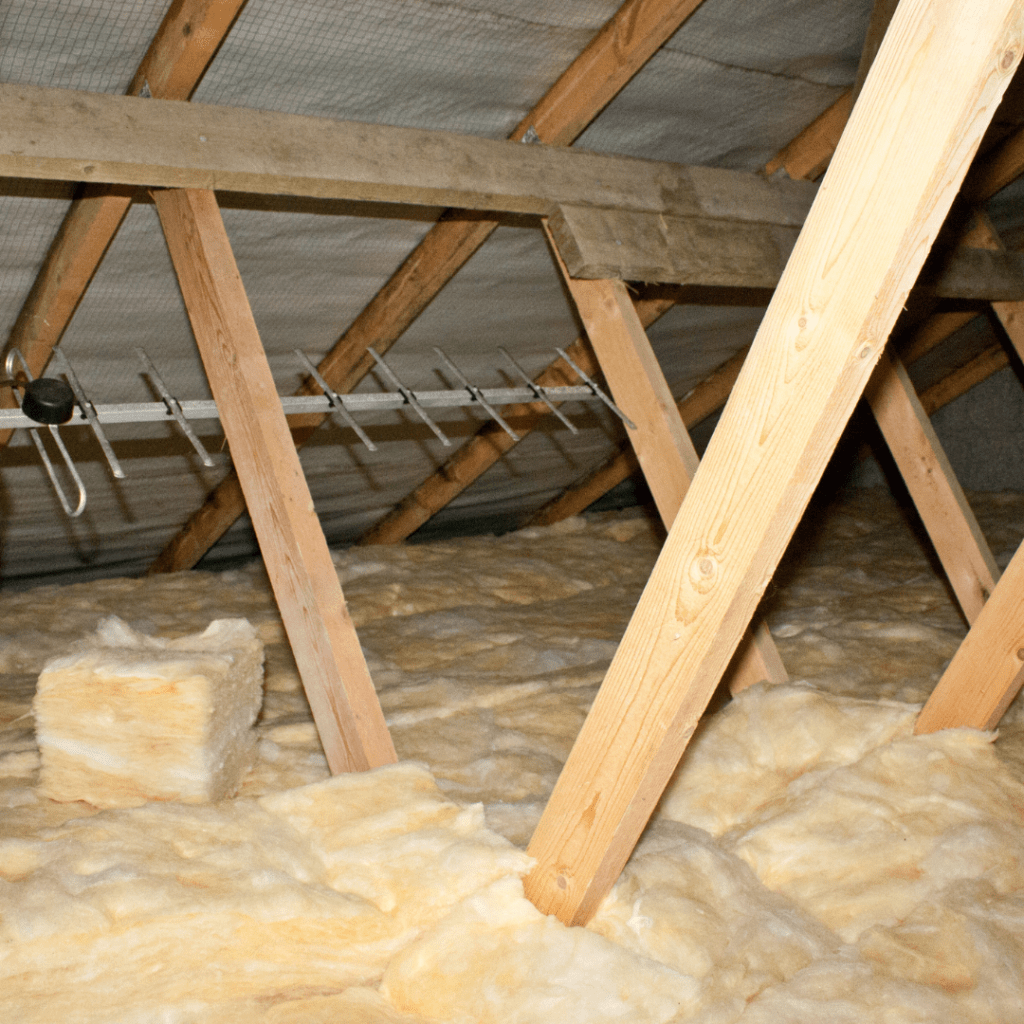
Insulation is like a cozy blanket for your home. Make sure your attic and walls are properly insulated to prevent heat loss. If your insulation seems lacking, consider adding more to improve energy efficiency and keep your heating bills under control.
Using spray foam insulation can help in smaller attics that are hard-to-reach areas as it sprays and expands onto walls and the floors of attics, ensuring a thick coat of insulation for any drafty cracks.
Sealing and Insulating Ductwork
Your ductwork carries warm air throughout your home, so it’s crucial to ensure it’s in good shape. Inspect your ducts for leaks and seal them with specialized duct sealant or metal tape. Additionally, consider insulating your ducts to prevent heat loss during distribution. Remember, warm air should be where you want it, not escaping into your attic or crawl spaces!
Heating System Maintenance: Preparing Your Furnace or Boiler
Scheduling a Professional Inspection
Give your heating system some love by scheduling a professional inspection. A trained technician can make sure everything is in tip-top shape and identify any potential issues before they become major headaches. Plus, it’s always good to have an expert take a look under the hood (or should we say, under the vents).
Cleaning and Replacing Air Filters
Clean air filters are essential for optimal airflow and energy efficiency. Take a moment to clean or replace your filters to keep your heating system running smoothly. It’s a small, but mighty task that can improve indoor air quality and help your furnace or boiler do its job effectively.
Checking Thermostat and Programming
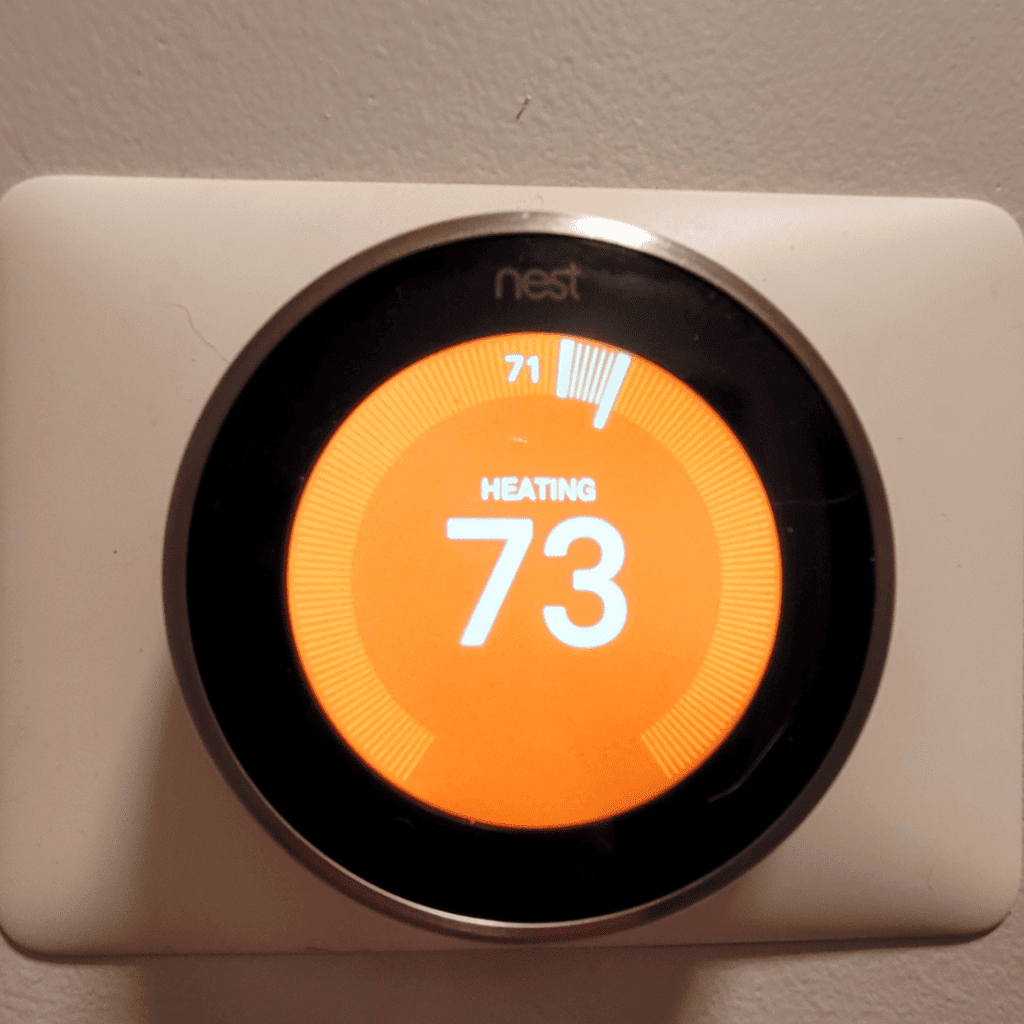
Don’t forget to give your thermostat some attention. I absolutely love mine! Check the batteries, ensure it’s properly programmed for your desired temperature, and consider installing a programmable thermostat if you haven’t already. Having control over your home’s temperature can save you money and keep you comfortable all winter long.
I have the Google Nest Learning Thermostat installed in my home and we all love it! The temperature can be controlled while at work or away from home via our smartphone. Plus, when I am working at home in my home office, I can ask Alexa to control the temperature since this thermostat can be controlled with Alexa! The best part about this thermostat is that it learns the temperature settings you like to help you remain cozy and comfortable without much hassle.
Ensuring Proper Ventilation
Proper ventilation is essential for a healthy home, especially during winter when windows are closed tight. Check your vents and make sure they’re not obstructed by furniture or debris. Good airflow helps prevent moisture buildup and keeps the air fresh and clean.
Installing a Wood Burning Stove
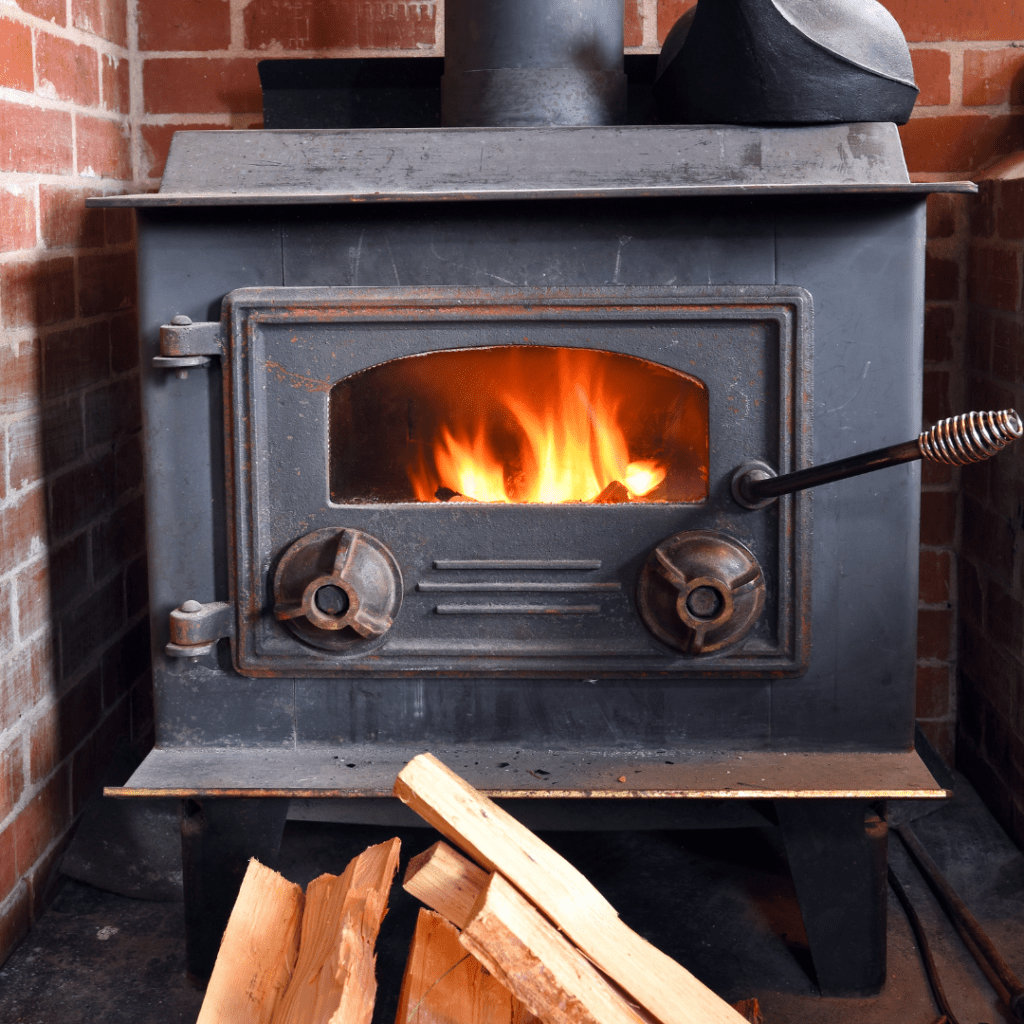
If you’re looking for a cozy and efficient way to keep your home warm during those chilly winter months, considering installing a wood-burning stove might be just the ticket. Not only does it add a touch of rustic charm to any space, but it’s also a practical and cost-effective heating solution. First things first, you’ll need to choose the right spot for your stove; ideally, it should be centrally located in an area where you spend most of your time.
Next up is sizing – make sure to select a stove that’s appropriate for the square footage of your home. And don’t forget about safety! Proper installation is crucial, so enlist the services of a certified professional who will ensure that all necessary precautions are taken. Once everything is set up correctly, all that’s left is gathering some quality firewood and mastering the art of building a warm and crackling fire. Sit back, relax, and enjoy the toasty ambiance while saving on energy bills – winterizing at its finest!
Protecting Plumbing: Preventing Frozen Pipes and Bursting
Winter is a beautiful season, but it can wreak havoc on your home’s plumbing if you’re not prepared. Frozen pipes are no joke, my friend, so let’s dive into some essential steps to keep your water flowing even when Jack Frost starts knocking on your door.
Insulating Exposed Pipes
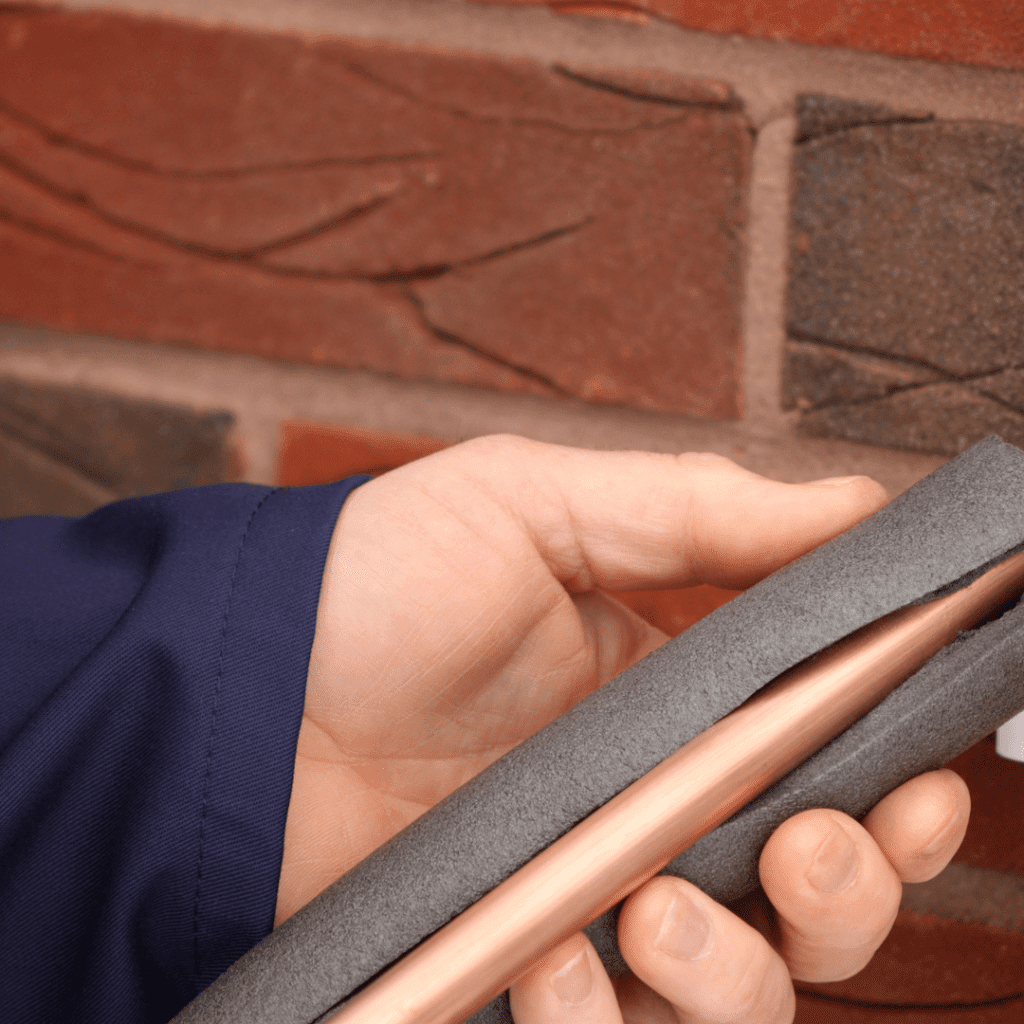
First things first, take a good look at your plumbing system. Do you see any exposed pipes lurking around? These poor suckers are especially vulnerable to freezing in cold weather. Grab some handy pipe insulation and wrap those pipes up. Not only will it keep them from freezing, but it might even give them a little boost of confidence to keep that water flowing. Win-win!
Draining Outdoor Faucets and Sprinkler Systems
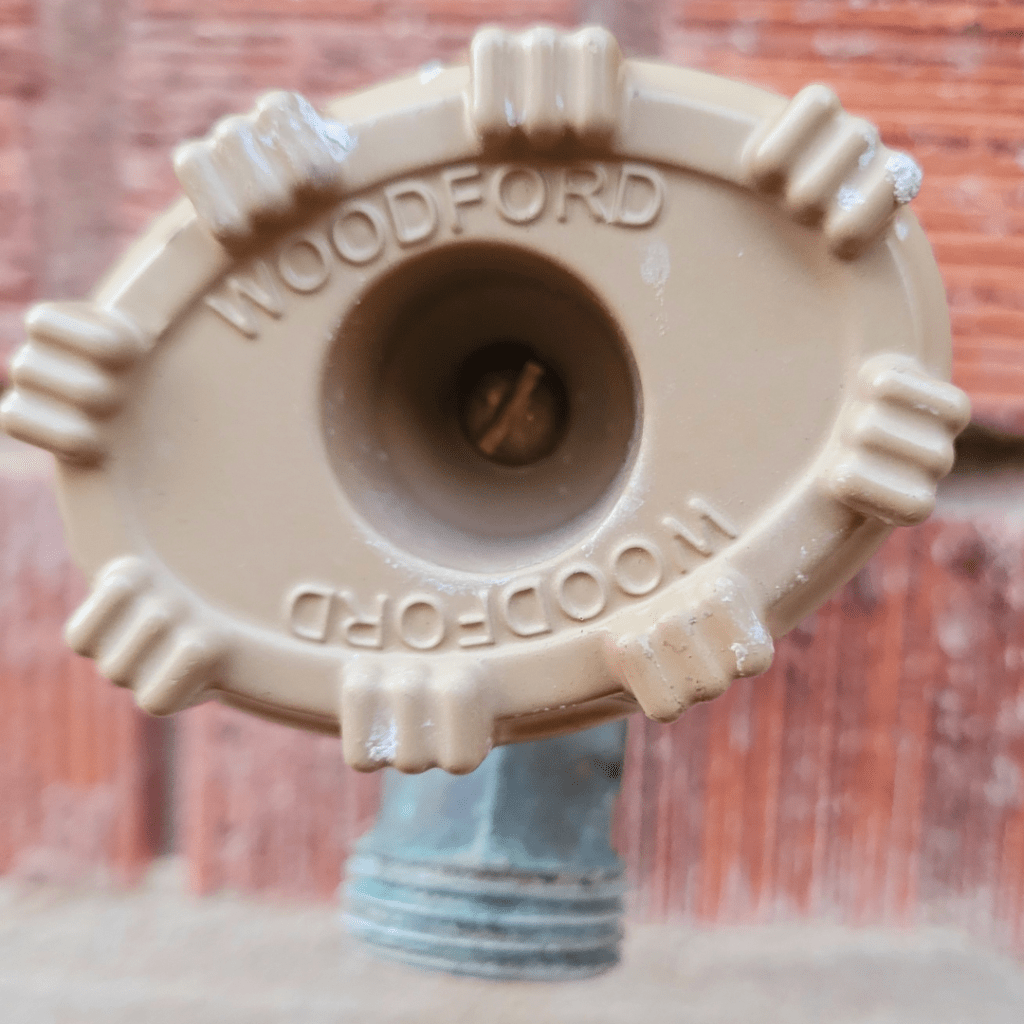
If you’re lucky enough to have outdoor faucets and sprinkler systems, you’ll want to bid them farewell for the winter. Drain them completely and shut off the water supply to prevent any water from lingering around and turning into ice. Trust me, you don’t want icicles sprouting from your outdoor pipes.
Keeping Indoor Temperature Consistent
One of the simplest ways to prevent frozen pipes is to maintain a consistent temperature indoors. It’s actually pretty important because fluctuating temperatures can cause serious damage to your plumbing system. When the temperature drops, the water inside the pipes can freeze and expand, leading to burst or cracked pipes. On the flip side, when it gets too hot, it can cause the pipes to expand and potentially leak or burst as well.
To avoid all these troubles, you need to maintain a consistent temperature in your home. That means keeping it warm during winter with proper insulation, especially in areas where your pipes are exposed like attics or basements. You can also use pipe insulation sleeves or heat tape for added protection. So remember, consistency is key when it comes to saving yourself from costly plumbing repairs!
Knowing How to Shut Off the Water
Last but not least, be prepared for anything. Know where your main water shut-off valve is located, just in case your pipes decide to throw a tantrum. Familiarize yourself with its location and make sure it’s easily accessible.
Energy Efficiency Tips: Saving Money While Keeping Warm
Let’s be real: winter can be harsh on your soul and your wallet. But fret not, my frugal friend! With a few energy-efficient tricks up your sleeve, you can enjoy a toasty home without breaking the bank. Here’s how:
Using Programmable Thermostats
Programmable thermostats are like the wizards of home heating. They allow you to set different temperatures for different times of the day, so you can keep things cozy when you’re home and save some dough when you’re out and about. As mentioned above, I highly recommend the Google Nest Learning Thermostat.
Maximizing Natural Sunlight
Mother Nature is kind enough to offer us some free warmth in the form of sunlight. So, why not take advantage of it? Keep those curtains open during the day to let the sunshine in and warm up your space.
Minimizing Heat Loss from Windows
Windows can be notorious traitors when it comes to heat retention. But fear not, brave homeowner! You can fight back with a few simple tricks. Install weatherstripping to seal any gaps, use window film for extra insulation, and embrace the power of thick curtains to keep the cold air out.
Utilizing Space Heaters Efficiently
Space heaters are like little fire-breathing dragons that can keep you warm and cozy in specific areas of your home. But be cautious because they can also be energy hogs. Use them strategically in frequently used rooms, but remember to turn them off when you leave or go to bed. Safety and savings go hand in hand.
I never use space heaters as my parents were hugely against them when I was growing up. They are known fire hazards that I am not comfortable with placing in my home. However, I know many people use them just fine.
Safety Precautions: Fire Prevention and Carbon Monoxide Detection
Winter is a time for warmth and joy, but it’s also a time to be extra cautious. Let’s talk about some important safety precautions to keep you and your loved ones safe during this chilly season.
Cleaning and Inspecting Chimneys
If you have a fireplace, it’s crucial to keep it well-maintained. Schedule a chimney cleaning and inspection to remove any debris or creosote buildup. Cleaning and inspecting chimneys regularly is crucial not only for fire prevention, but also for carbon monoxide detection. When we use our fireplaces or wood-burning stoves, creosote, a highly flammable residue, can build up inside the chimney. This sticky substance increases the risk of chimney fires. Additionally, if a bird’s nest or debris blocks the flue, smoke might accumulate in your home instead of being safely vented outside.
And that’s not all! Chimneys are also potential sources of carbon monoxide leaks. Cracks or gaps in the chimney liner could allow this odorless gas, which is extremely dangerous to inhale, to seep into your house. By having your chimney inspected and cleaned annually by a certified professional, you’re taking proactive steps toward keeping your family safe and cozy during those cold winter nights. So don’t forget to add chimney maintenance to your yearly home care checklist!
Testing Smoke Detectors and Carbon Monoxide Alarms
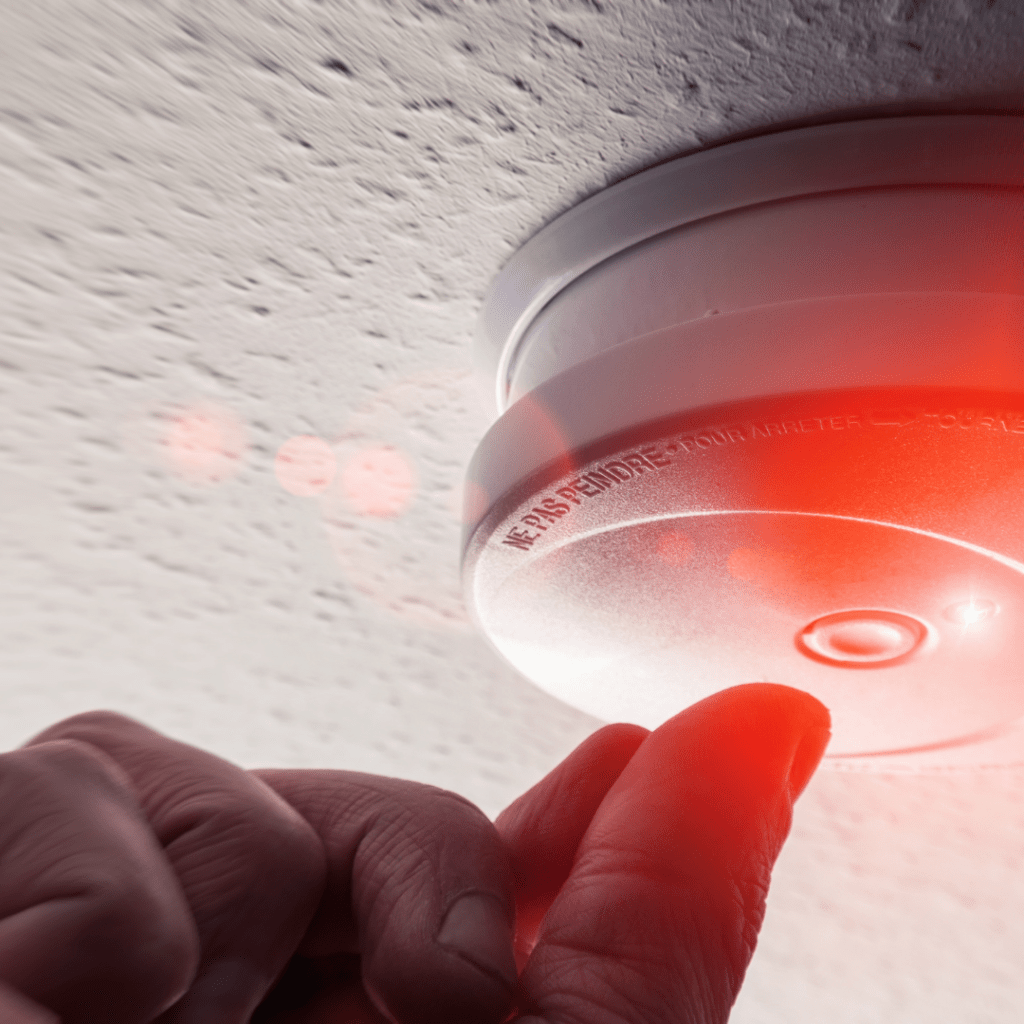
Smoke detectors and carbon monoxide alarms are like your home’s personal bodyguards, protecting you from potential dangers. So, make sure they’re in top-notch condition by testing them regularly. Change the batteries, give them a little pat on the back, and sleep soundly knowing they have your back.
As soon as I get a chance, I am replacing mine with this smoke and CO detector alarm combination with a ten-year battery life. It is highly rated and Alexa-integrated, which is a win for me!
Keeping Flammable Items Away from Heat Sources
Winter is the time for cozy blankets, fuzzy socks, and hot cocoa, but it’s also the time to keep flammable materials in check. Make sure your cozy atmosphere doesn’t turn into a blazing inferno by keeping flammable items away from heat sources. It’s all about creating a warm atmosphere without setting your home on fire.
Creating an Emergency Evacuation Plan
Nobody wants to think about emergencies, but it’s better to be safe than sorry. Take some time to create an emergency evacuation plan with your family. Know the escape routes, designate a meeting point, and make sure everyone understands what to do in case of an emergency.
Cozy Comfort: Adding Warmth and Ambiance to Your Home
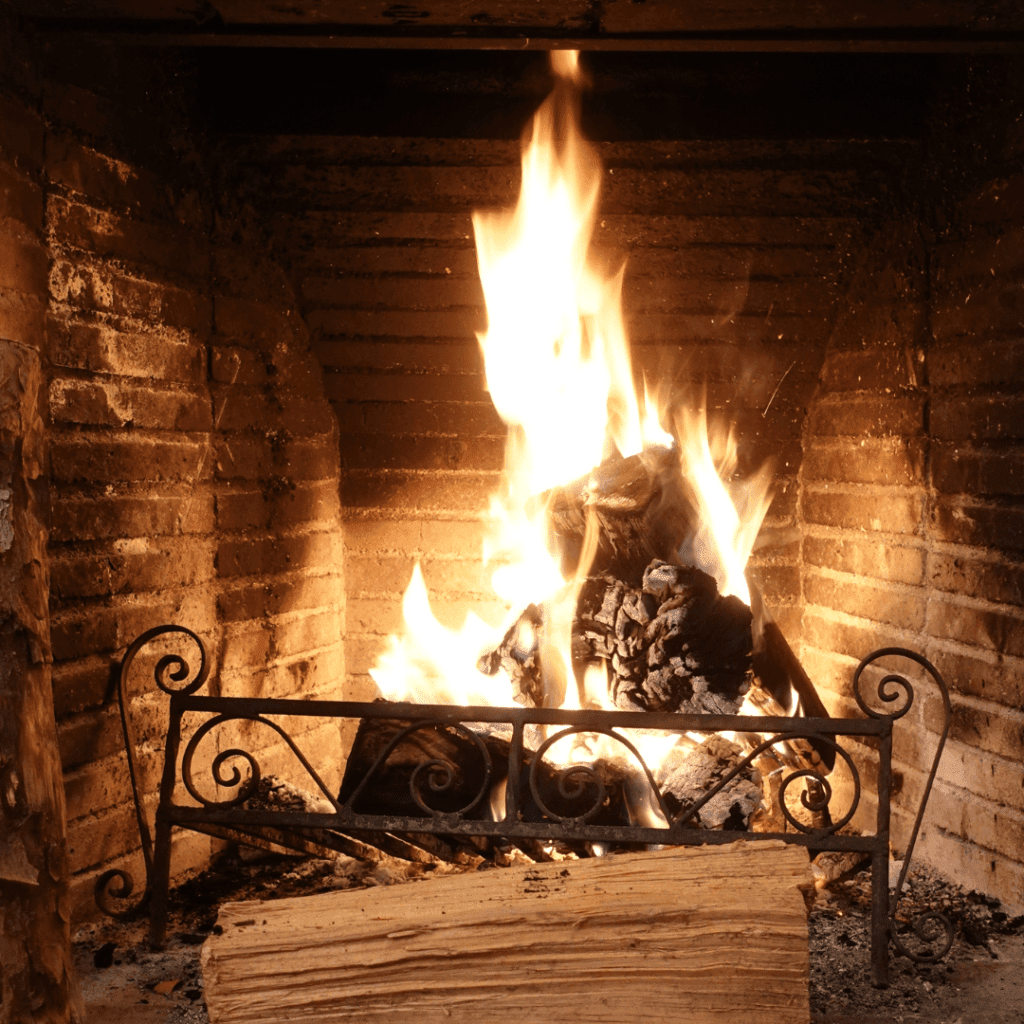
Winter may bring cold winds and snow, but it also brings an opportunity to create a cozy and inviting atmosphere in your home. Let’s explore some simple ways to add warmth and a dash of hygge to your living space.
Layering Insulation and Blankets
When it comes to warmth, layering is key. Add an extra layer of insulation to your windows and doors to keep the cold drafts out. And don’t forget to layer yourself in cozy blankets while you’re at it.
Adding Candles to Your Living Spaces
Adding candles to your living space naturally enhances a cozy environment. Even if the candles are only LED candles, the sight of them screams cozy to me! I love the ones with the remote controls because when you have LED candles on high areas like shelves and mantels and spread out all over the room, having control over them all with one remote controller is a game changer!
Conclusion
In conclusion, winterizing your home is a wise investment of time and effort that pays off in the long run. By addressing vulnerabilities, weatherproofing, maintaining heating systems, protecting plumbing, and implementing energy-efficient practices, you can create a warm and safe environment for yourself and your loved ones during the winter months. Don’t let Jack Frost catch you off guard – take the necessary steps to prepare your home for his icy grip. Stay cozy and worry-free as you embrace the beauty of winter within the comfort of your winterized home.
By the way, don’t forget to winterize your vehicles too this winter and beat Jack Frost in his own game by being prepared ahead of time with my comprehensive post on how to winterize your car too! Check it out at the following link and grab the FREE printable Emergency Car Kit Checklist!
Is Your Car Ready for Winter? The Ultimate Checklist for Your Winter Emergency Car Kit
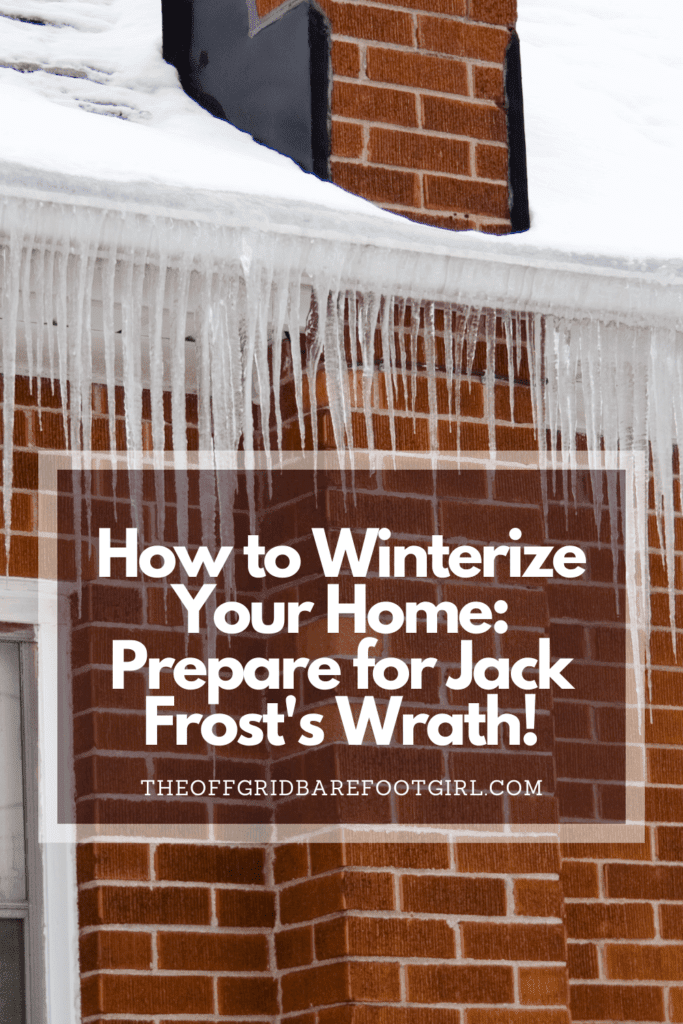
Frequently Asked Questions
1. Why is winterizing my home important?
Winterizing your home is important because it helps to protect your property from potential damage caused by cold temperatures, snow, and ice. It also helps to maintain a comfortable and energy-efficient living space during the winter months.
2. How do I know if my home needs winterization?
You can assess if your home needs winterization by checking for common vulnerabilities such as drafts, air leaks, inadequate insulation, and exposed pipes. Additionally, if you have experienced issues in previous winters, it is a good indication that your home could benefit from winterization measures.
3. Can I winterize my home on my own, or should I hire a professional?
Many winterization tasks can be done by homeowners themselves, such as sealing drafts, insulating, and maintaining heating systems. However, for more complex tasks or if you’re unsure about certain aspects, it is advisable to hire a professional to ensure the work is done correctly and safely.
4. How much can I save on energy costs by winterizing my home?
The amount you can save on energy costs by winterizing your home will vary depending on factors such as the size of your home, current energy efficiency, and local climate. However, studies suggest that proper winterization measures can result in energy savings ranging from 10% to 20% on heating bills.
Summary
I hope I have inspired you to live sustainably with these tips and products.
If you were encouraged by this post, I invite you to check out my FREE Printables Page for fun free printables, planners, and charts.
ENTER MY FREE Printables Page HERE
Here are some more of my gardening inspiration posts to check out!
How to Feed Your Family During the Government Shutdown
12 Best Tips for Creating an Eco-Friendly Household
Survival Lessons from the Great Depression
The Best 15 Homesteading Blogs to Follow for Inspiration
How to Criminal-Proof Your Home with These 5 Steps
How to Create Your Cottagecore Aesthetic Dream Home
Ideas for Rustic Living Room Vibes You’ll Love All Year Round!
How to Prep Your Home for Chilly Fall Nights
Bring Back the Magic of Fireflies and Lightning Bugs with Solar Power!
The Ultimate Portable Power Bank for Homesteaders and Preppers!
A Bug Out Bag That’s Actually Ready — When You Need It Most!
Magical Ways to Use Fairy Lights in Your Off-Grid Home
How to Live a Cozy Off-Grid Life
The Best Off-Grid Kitchen Tools for Indoors (No Power Needed!)
DIY Solar Made Simple: How I Powered My Off-Grid Life with Practical Preppers!
Sleeper Cells in America: What You Need to Know Now!
How People Are Surviving in Broken Cities with Broken Systems
When the World Hurts, We Prepare with Purpose
How to Live On Raw Land: Everything You Need to Know!
How to Do Off-Grid Laundry with Eco-Friendly Laundry Detergent!
Hollywood on Fire! What Secrets Are In the Ashes?
FEMA Concentration Camps? Are Echos of the Past Returning?
How Likely Is a Russian EMP? One Pulse Could Black Us Out!
What Dark Secrets Lie in The Bird Flu Symptoms?
The Blackout Sun: Who Is Blacking Out Our Sunlight?
More Posts!
How to Bug-In During a Deep Freeze!
‘FOGVID-24?’ What’s in the Mysterious Fog That’s Making Everyone Sick?
From Snow to Sow: Plan Your Spring Garden Now!
11 Fun Ways to Brighten Your Spring Garden with Personality
Top 10 Spring Garden Crops to Harvest in 30 Days and Eat Now!
The Best Survival Crops for Caloric Survival
More Posts!
My Victory Garden: What I Learned from 5+ Years
Why Every Family Should Have a Victory Garden in Their Backyard Now!
The Best Perennials for a Long-Term Survival Garden
The Best Essential Oils for Plants That Repel Garden Bugs
How to Grow Green Garden Peas: Perfect Plump Peas!
Hugelkultur: Does This Epic Pioneering Method Actually Work?
9 Ways to Celebrate Earthing Day in Your Garden!
Gardening Indoors: Secrets of Growing Your Food Inside!
How to DIY a Milk Jug Drip Irrigation System!
Why Cedar Mulch Is The Perfect Natural Weed Barrier
Gardening Projects
Onions: How to Grow Onions for Storage
Peas: How to Grow Garden Peas for a Bumper Crop
Carrots: How to Grow Carrots for a Bountiful Harvest
Prep Your Garden for Spring Planting with These Expert Tips!
How to Grow a Prepper Garden to Survive and Thrive
The Best Garden Tools You Need for a Productive Season
Fastest Growing Vegetables for Your Survival Garden
How to Grow Marigolds As Pest Control In Your Vegetable Garden
Must-Have Tools for a Successful Balcony Vegetable Garden
How to Effectively Combat Powdery Mildew in Your Garden
The Best Tips for Organic Gardening
How to Release Ladybugs In Your Garden for Organic Pest Control
More Posts!!
The Best Garden Snail Control Strategies
The Best Spring Vegetables to Grow in Your Garden
Seed Starter Mix: How To Make Your Organic Seed Starter Mix At Home
How to Grow a Productive Canning Garden
How to Plant and Grow a Salsa Garden
Easiest Heirloom Vegetable Seeds to Grow Now
How to Use the Hand Twist Claw Tiller: Tackling Tough Soil
More Fun Gardening Posts to Check Out!
Planning Your Garden: How to Plan a Vegetable Garden: Expert Green Thumb Tips!
Winterizing the Garden: How to Winterize Your Vegetable Garden: Step-by-Step Checklist
Mulching the Garden: How to Make Leaf Litter Mulch
Grow a Pumpkin Patch: How to Grow a Pumpkin Patch in Your Backyard
How to Grow a Fall Garden: 9 Best Fall Crops
Clever Ways to Incorporate Indoor Composting into Your Home
How to Start Composting for the Garden: A Step-by-Step Guide
The Ultimate Guide to Composting in Your Suburban Backyard
Why I Built A Survival Garden in My Backyard
16 Best Medicinal Herbs to Grow in Your Garden Now
Blessings,
The Off Grid Barefoot Girl

